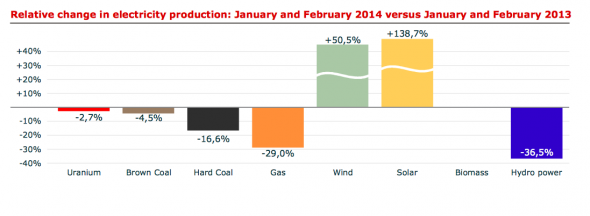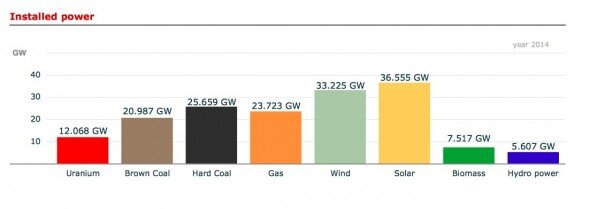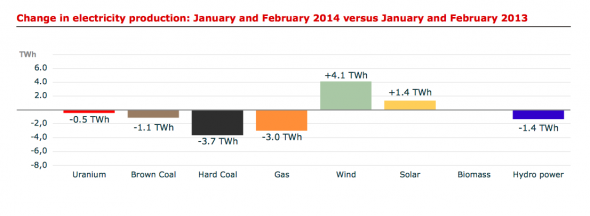New data released in Germany shows that wind and solar production has increased dramatically in Germany and, contrary to what detractors say, it has reduced the amount of fossil fuel production.
Data for the first two months of 2014 shows that solar production more than doubled over the previous year, while wind energy production rose by 50%.
Electricity production from all fossil fuel sources – brown coal, hard coal and gas, as well as nuclear – all fell, according to data compiled by the Fraunhofer Institute for Solar Energy Research.
This first graph shows the amount of production from the various sources in January and February (the height of winter), compared to a year ago. All fossil fuels are down, while wind and solar are the only gainers.
This is the same information but given as a percentage increase or decrease. Note that solar more than doubles, helped not only by an extra 7GW of capacity, but also increased sunshine. The biggest impact among fossil fuels was gas, which represents the fact that it is the most expensive marginal cost fuel, and is first out of the system under the merit order impact.

And this graph shows the rated capacity of each fuel source in Germany as at mid-February, 2014. Solar, as can be seen, has the most rated capacity of any energy source.

All graphs via Fraunhofer ISE
© 2014 Solar Choice Pty Ltd
